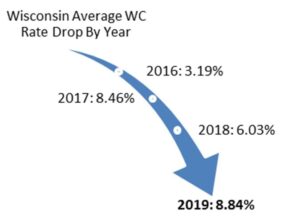Is term life insurance more affordable than permanent life insurance?

When it comes to life insurance, it is important to consider not only the coverage it provides but also its affordability. One common question that often arises is whether term life insurance is more affordable than permanent life insurance. To make an informed decision, it is crucial to understand the basics of life insurance and compare the costs of both types of policies.
Understanding the Basics of Life Insurance
Life insurance is a crucial financial tool that provides protection and peace of mind to individuals and their loved ones. It serves as a safety net, ensuring that in the event of the policyholder’s death, their beneficiaries will receive financial support to cover various expenses and maintain their standard of living.
There are different types of life insurance policies available, each with its own unique features and benefits. Two common types are term life insurance and permanent life insurance.
What is Term Life Insurance?
Term life insurance is a popular option for individuals who want coverage for a specific period. It offers financial protection for a predetermined term, typically ranging from 10 to 30 years. This type of policy is often chosen by young families or individuals with specific financial obligations, such as a mortgage or children’s education expenses.
One of the key advantages of term life insurance is its affordability. Since it provides coverage for a limited period, the premiums tend to be lower compared to permanent life insurance policies. It allows policyholders to tailor their coverage to specific needs and budgetary constraints.
It’s important to note that term life insurance does not accumulate cash value over time. It is solely focused on providing a death benefit to the policyholder’s beneficiaries. If the policyholder passes away during the specified term, the beneficiaries will receive the predetermined payout. However, if the policyholder outlives the term, the coverage terminates, unless the policy is renewed or converted.
What is Permanent Life Insurance?
Permanent life insurance is designed to provide coverage for the entire lifetime of the policyholder. Unlike term life insurance, it doesn’t have a specific term and remains in force as long as the premiums are paid. This type of policy offers both a death benefit and a cash value component.
There are two main types of permanent life insurance: whole life insurance and universal life insurance.
Whole Life Insurance
Whole life insurance offers lifelong coverage and guarantees a death benefit to the beneficiaries upon the policyholder’s passing. It also accumulates a cash value component over time, which grows tax-deferred. The cash value can be accessed by the policyholder through loans or withdrawals, providing a source of funds for various financial needs, such as education expenses or emergencies.
Furthermore, whole life insurance policies may also earn dividends, which can be used to increase the death benefit, accumulate more cash value, or reduce premiums. These dividends are not guaranteed but are often paid by mutual insurance companies that distribute profits to their policyholders.
Universal Life Insurance
Universal life insurance offers more flexibility compared to whole life insurance. It provides policyholders with the ability to adjust their premium payments, death benefit amounts, and cash value accumulation. This flexibility allows individuals to adapt their coverage to changing financial circumstances or goals.
With universal life insurance, policyholders have the option to increase or decrease their death benefit, subject to certain requirements. They can also adjust the premium payments within certain limits, depending on their financial situation. The cash value in a universal life insurance policy grows based on the performance of the underlying investments, which are often tied to market indices or interest rates.
It’s worth noting that universal life insurance policies require careful monitoring to ensure that the cash value is sufficient to cover the cost of insurance and other policy expenses. Failure to maintain adequate funding may result in the policy lapsing or requiring additional premium payments.
In conclusion, both term life insurance and permanent life insurance serve important purposes in providing financial protection to individuals and their families. Understanding the differences between these types of policies can help individuals make informed decisions based on their specific needs, goals, and budgetary considerations.
Enter your ZIP code below to compare cheap life insurance rates.
Secured with SHA-256 Encryption
Cost Comparison Between Term and Permanent Life Insurance
Pricing of Term Life Insurance
Term life insurance generally offers lower premiums compared to permanent life insurance. The premiums are often fixed for the duration of the term, allowing policyholders to budget more effectively. The cost of term life insurance primarily depends on factors such as the policyholder’s age, health status, and desired coverage amount. Younger individuals in good health typically pay lower premiums.
However, it is worth noting that term life insurance does not provide lifelong coverage, and once the term ends, the policyholder may need to reapply for coverage, which can lead to higher premiums due to age-related factors and potential health changes.
Pricing of Permanent Life Insurance
Permanent life insurance tends to have higher premiums compared to term life insurance. This is mainly because the policy provides lifelong coverage and accumulates cash value over time. The premiums are generally higher to account for the longer coverage duration and the cash value component.
The cost of permanent life insurance is influenced by various factors, including the policyholder’s age, health status, lifestyle, and the desired death benefit amount. Additionally, the premiums may vary depending on the type of permanent life insurance – whole life or universal life policy – and the policy’s specific features and benefits.
When considering the pricing of term life insurance, it is important to understand that the premiums are typically lower because the coverage is temporary. Term life insurance provides a death benefit to the policyholder’s beneficiaries if the insured individual passes away during the specified term. The policyholder can choose the term length, such as 10, 20, or 30 years, depending on their needs and financial goals.
During the term, the premiums remain unchanged, allowing policyholders to plan their finances accordingly. This stability in premium payments can be beneficial for individuals who want affordable coverage for a specific period, such as paying off a mortgage or supporting their children until they become financially independent.
On the other hand, permanent life insurance offers coverage for the entire lifetime of the insured individual, as long as the premiums are paid. This type of policy not only provides a death benefit but also includes a cash value component that grows over time. The cash value can be accessed by the policyholder during their lifetime, either through withdrawals or policy loans, providing a potential source of funds for various needs, such as education expenses or supplementing retirement income.
Due to the lifelong coverage and the cash value feature, permanent life insurance generally has higher premiums compared to term life insurance. The premiums for permanent life insurance are typically designed to remain level throughout the policyholder’s life, ensuring predictable and consistent payments.
The cost of permanent life insurance is influenced by several factors. The policyholder’s age plays a significant role, as younger individuals usually pay lower premiums compared to older individuals. This is because younger individuals are considered less likely to pass away during the early years of the policy, resulting in a lower risk for the insurance company.
Health status is another crucial factor that affects the cost of permanent life insurance. Insurance companies evaluate the applicant’s health through a medical underwriting process, which may include a review of medical records, physical examinations, and sometimes even laboratory tests. Individuals in good health typically receive more favorable rates, as they are perceived as lower risk by the insurance company.
Lifestyle choices, such as smoking or engaging in hazardous activities, can also impact the cost of permanent life insurance. These factors may increase the premiums due to the higher risk associated with such behaviors.
Furthermore, the desired death benefit amount influences the cost of permanent life insurance. Policyholders can choose the amount of coverage they want to provide for their beneficiaries. Higher death benefit amounts generally result in higher premiums.
It is important to note that the cost of permanent life insurance may vary depending on the specific type of policy chosen. Whole life insurance and universal life insurance are the two main types of permanent life insurance.
Whole life insurance offers a guaranteed death benefit, fixed premiums, and the potential to earn dividends, which can be used to reduce premiums or increase the cash value. The premiums for whole life insurance are generally higher compared to term life insurance due to the lifelong coverage and cash value accumulation.
Universal life insurance, on the other hand, provides more flexibility in premium payments and death benefit amounts. The policyholder can adjust the premium payments and death benefit according to their changing needs and financial situation. This flexibility often comes with a trade-off, as universal life insurance may require more active management and monitoring to ensure the policy remains in force.
In conclusion, while term life insurance generally offers lower premiums, permanent life insurance provides lifelong coverage and the potential for cash value accumulation. The cost of life insurance, whether term or permanent, is influenced by various factors, including age, health status, lifestyle, and the desired death benefit amount. Understanding these factors can help individuals make informed decisions when choosing the type and amount of life insurance that best suits their needs and financial goals.
Factors Influencing the Cost of Life Insurance
Age and Health Status
The age and health status of the policyholder play a significant role in determining the cost of life insurance. Younger individuals in good health are generally charged lower premiums since they are considered lower risk. As individuals age or develop health conditions, the cost of life insurance tends to increase to reflect the higher risk associated with insuring them.
Insurance companies typically evaluate health through medical exams and consider factors such as weight, blood pressure, cholesterol levels, and medical history. Those with pre-existing health conditions or unhealthy habits, such as smoking, may face higher premiums.
Lifestyle and Occupation
Lifestyle choices and occupation can also impact the cost of life insurance. Certain high-risk occupations or participation in hazardous activities, such as skydiving or deep-sea diving, can lead to higher premiums. Similarly, risky lifestyle choices, such as excessive alcohol consumption or drug use, may also result in increased premiums.
Insurance companies take into account these factors as they assess the potential risks associated with insuring an individual. Therefore, maintaining a healthy lifestyle and choosing a low-risk occupation can help lower life insurance premiums.
Policy Features and Benefits
The specific features and benefits of a life insurance policy can influence its cost. Additional riders, such as accelerated death benefit riders or disability income riders, may increase the premiums. These riders provide additional coverage or benefits but come at an extra cost.
The death benefit amount also affects the cost of life insurance. Higher death benefit amounts will generally result in higher premiums. It is important to carefully consider the desired coverage amount and the corresponding premium cost when selecting a life insurance policy.
Pros and Cons of Term and Permanent Life Insurance
Advantages of Term Life Insurance
Term life insurance offers several advantages that make it a popular choice for many individuals. The primary advantage is affordability, especially for the younger population. The fixed premiums for the term duration allow for easier budgeting. Term life insurance is also straightforward, providing coverage without any complex investment or cash value components.
Additionally, term life insurance is often used to cover specific financial obligations, such as mortgage payments or children’s education expenses, during the policyholder’s working years.
Disadvantages of Term Life Insurance
While term life insurance has its merits, it also has some limitations. One significant drawback is that it does not provide lifelong coverage. Once the term ends, the policyholder may need to reapply for coverage at a potentially higher premium due to increased age and health risks.
Furthermore, term life insurance provides no cash value or potential for investment growth. If the policyholder outlives the term or decides to cancel the policy, there is no return on the premiums paid.
Advantages of Permanent Life Insurance
Permanent life insurance offers a range of advantages that differentiate it from term life insurance. One key advantage is lifetime coverage. As long as the premiums are paid, the policy remains in effect, providing peace of mind to the policyholder and their beneficiaries.
Another advantage of permanent life insurance is the cash value component. The policy accumulates cash value over time, which can be accessed or borrowed against during the policyholder’s lifetime. This feature can provide a source of emergency funds or supplement retirement income.
Disadvantages of Permanent Life Insurance
Despite its benefits, permanent life insurance has some potential downsides. One significant drawback is the higher cost of premiums compared to term life insurance. The added cost is necessary to accommodate the longer coverage duration and the cash value component.
Another consideration is the complexity of permanent life insurance. The various features, options, and riders can make the policy more difficult to understand. Additionally, the cash value growth is often relatively slower in the initial policy years, requiring a long-term commitment to fully benefit from the investment aspect.
In conclusion, when deciding between term life insurance and permanent life insurance, affordability is an essential factor to consider. While term life insurance generally offers lower premiums, permanent life insurance provides lifelong coverage and a cash value component. The cost of life insurance is influenced by factors such as age, health status, lifestyle, occupation, and desired policy features. Understanding these factors and considering the advantages and disadvantages of each type of insurance will help individuals make an informed choice based on their unique needs and financial circumstances.
Frequently Asked Questions
Is term life insurance more affordable than permanent life insurance?
Yes, term life insurance is generally more affordable than permanent life insurance. This is because term life insurance provides coverage for a specific period of time, while permanent life insurance offers coverage for the entire lifetime of the insured.
What is the main difference between term life insurance and permanent life insurance?
The main difference between term life insurance and permanent life insurance is the duration of coverage. Term life insurance provides coverage for a specific term, such as 10, 20, or 30 years, while permanent life insurance offers coverage for the entire lifetime of the insured.
Can you explain the concept of affordability in life insurance?
Affordability in life insurance refers to the cost of premiums and the ability of an individual to comfortably pay for the coverage. Term life insurance tends to be more affordable because it provides coverage for a limited period, while permanent life insurance involves higher premiums due to the lifelong coverage and additional features like cash value accumulation.
Are there any advantages to choosing permanent life insurance over term life insurance?
Yes, there are advantages to choosing permanent life insurance over term life insurance. Permanent life insurance offers lifelong coverage, builds cash value over time, and may provide additional benefits such as the ability to borrow against the policy’s cash value or receive dividends. It can also serve as an estate planning tool.
What factors should I consider when deciding between term life insurance and permanent life insurance?
When deciding between term life insurance and permanent life insurance, you should consider factors such as your financial goals, budget, age, health, and the specific needs you want the insurance to address. Term life insurance may be more suitable if you need coverage for a specific period, while permanent life insurance may be preferable if you seek lifelong coverage and potential cash value accumulation.
Enter your ZIP code below to compare cheap life insurance rates.
Secured with SHA-256 Encryption
Jeffrey Johnson
Insurance Lawyer
Jeffrey Johnson is a legal writer with a focus on personal injury. He has worked on personal injury and sovereign immunity litigation in addition to experience in family, estate, and criminal law. He earned a J.D. from the University of Baltimore and has worked in legal offices and non-profits in Maryland, Texas, and North Carolina.
He has also earned an MFA in screenwriting from Chapman Univer…
Benjamin Carr
Former State Farm Insurance Agent
Benjamin Carr worked as a licensed insurance agent at State Farm and Tennant Special Risk. He sold various lines of coverage and informed his clients about their life, health, property/casualty insurance needs.
Assessing risks and helping people find the best coverage to suit their needs is a passion of his. He appreciates that insurance was designed to protect people, particularly during times…
Former State Farm Insurance Agent
Editorial Guidelines: We are a free online resource for anyone interested in learning more about life insurance. Our goal is to be an objective, third-party resource for everything life insurance-related. We update our site regularly, and all content is reviewed by life insurance experts.



